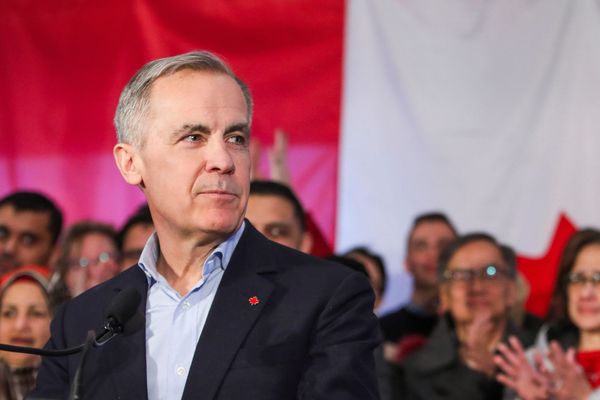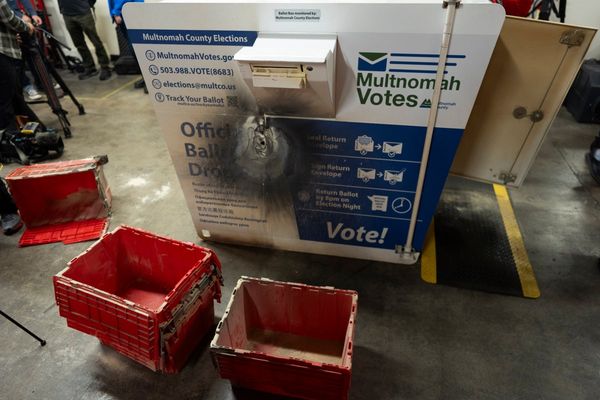
China’s increasingly strident territorial claims and economic coercion have forced startled governments such as those in India, Japan, Taiwan, and Vietnam to strengthen relations with friends that can help them respond effectively. In recent months, India has arguably suffered the most from China’s lack of restraint: New Delhi is trapped in a slow-moving border stand-off with Beijing that has already left more than 20 troops dead.
The possibility of greater international coordination to rein in Beijing should be especially appealing to New Delhi. When it comes to potential partners, India enjoys a big geopolitical advantage over China—most of the West roots for a rising, democratic country. Meanwhile, China’s list of allies isn’t very long and includes problematic governments such as those of North Korea and Pakistan.
Countries may instinctively prefer India, but depending on how its current border stand-off with China is resolved, New Delhi’s traditional aversion to security and trade alliances could complicate partnerships. To encourage Indian choices that facilitate alignment, countries such as the United States need to be a more consistent friend, and sometimes to be prepared to play the long game when interests diverge on issues such as partnering with Russia. If India makes the right decisions, its democratic institutions, market potential, and demographics position it as a leading power that can make a difference in managing China and the global commons.
Even casual observers of India are aware of its postcolonial outlook: New Delhi famously adopted a strategy of so-called nonalignment to maximize its options and minimize potential restraints. India’s External Affairs Minister Subrahmanyam Jaishankar recently described this policy as comprising a fierce independent streak intended to preserve decision-making autonomy, coupled with a more cautious and at times passive approach as a nascent power. Proponents of nonalignment have a preference for a multipolar world with several different power centers.
Times have substantially changed. For more than a decade, a stronger, more confident India has shed its reluctance about defense collaboration with the United States and U.S. allies such as Japan. India’s own aspirations and concerns about China’s growing ambitions have propelled this evolution, and Beijing’s recent overreaching could accelerate it.
After last month’s lethal border brawl, several developments show that China is pushing India toward the United States and its allies. India seems poised to invite Australia to the annual military exercises that include Japan and the United States. Much to the Trump administration’s delight, the Indian government is signaling that it may exclude Huawei from national 5G trials. And the globally disseminated images of the Indian navy sailing alongside a U.S. carrier strike group in the Indian Ocean showed a changed relationship.
But growing security coordination shouldn’t mask the reality of a deliberate process that has so far fallen short of balancing China. In fact, India’s acute sense of a power asymmetry with China may help explain why it tread carefully with Beijing after their last major border confrontation in 2017. This military and financial gap may not close quickly, as India has fared worse in the early stages of the pandemic. But the imbalance will likely accelerate Indian defense purchases, as apparently is already happening.
New Delhi could decide against a closer alignment with Washington and its allies, especially if it constrains other relationships. Consider recent developments in India’s longstanding relationship with Russia. Barely a week after India’s deadly border skirmish with China, Jaishankar kept a virtual appointment with his Russian and Chinese counterparts. Meanwhile, despite the domestic crises sparked by the pandemic, India’s defense minister rushed off to Moscow for consultations with India’s largest weapons supplier. More recently, Indian officials reportedly have renewed interest in Russia joining the U.S.-led Indo-Pacific framework to maintain a rules-based region. That would be consistent with the view often articulated by India’s top diplomats that today’s increasingly multipolar world offers opportunities for New Delhi to maneuver.
Lingering questions about the reliability of the United States, the European Union’s cohesion (at least until recently), and fears of Western retrenchment that predated the global populist wave could also activate latent Indian concerns about abandonment. The Trump administration’s visible support for India during the ongoing border crisis has registered in New Delhi, but the capital also isn’t blind to how the White House has treated its closest friends. At the moment, Indian officials may be able to shrug off the latter precisely because their country is not a military ally, but a significantly closer relationship could raise the stakes and possibly change New Delhi’s strategy.
Even if China’s assertiveness continues to push India closer to like-minded countries, New Delhi’s trade policies, particularly pending rules in digital commerce, pose a potential challenge. India has taken a series of steps in recent years to protect its markets from Chinese imports. But when aiming at China, India has sometimes hit friends. Trade restrictions have included tariffs and tax hikes, local content requirements, and other policies that apply globally, including to U.S. firms.
Despite trade differences, countries want India inside the room when cutting deals, for reasons beyond its market size. They value its influence and role in setting rules and building regional architecture. It’s why—as Singapore’s prime minister recently acknowledged—the countries negotiating the Regional Comprehensive Economic Partnership “hope that India will join one day.” Yet India withdrew from talks last November, while its trade negotiations with Australia, Canada, the European Union, and others have sputtered or stalled. So far, even a long-promised, limited trade agreement has eluded India and the United States.
Shared concerns over China will likely encourage countries to isolate trade disagreements with India. But Washington’s protectionist turn suggests that segregating trade and security matters is not easy in practice. The Trump administration backed out of a landmark Pacific trade pact with U.S. partners, imposed duties on trusted allies under the guise of national security, hogtied the World Trade Organization, and went after China alone. Importantly, in the process, the president alienated the same friends who find fault with China’s “market-distorting state capitalism”—and took a step towards Beijing’s economic model.
Depending on when and how countries emerge from the pandemic, exhausted and long-suffering publics may have limited patience for trade reforms that could hurt domestic businesses in the short term. In such an environment, New Delhi would be under greater pressure to skillfully juggle competing domestic and international imperatives, including keeping critical partnerships on track.
New Delhi’s friends, of course, will have a say in how their relationships with India grow to shape China’s choices. In a recent virtual session with his American counterpart this month, Jaishankar offered some candid advice: “I think the United States really has to learn to work with a more multipolar world with more plurilateral arrangements, go beyond alliances with which it has grown up over the last two generations.” His words could be a plea for more flexible thinking. Leaning into the strategic opportunity that China has created means not taking India for granted or forcing its hand. Washington may need to work harder to earn New Delhi’s support at the outset of collaboration, and also manage its own expectations for the relationship. It needs to be prepared for when India’s near-term interests and ambitions diverge from time-to-time with the United States and its allies, such as on opening markets or Russia’s international role.
The good news is that there is yet tremendous room for growth in U.S.-India ties; a partnership that does not resemble a traditional U.S. alliance would nevertheless offer considerable shared benefits, not the least of which is helping ensure no one country dominates Asia’s future.
To find common ground, India’s like-minded partners will need to demonstrate reliability, exhibit patience and care in addressing New Delhi-Moscow defense ties, and a far-sighted but firm approach to handling trade disagreements—one that is ideally guided by a broader vision that can help bridge immediate differences. Relaunching the moribund Trade Policy Forum would be a good beginning. As India and other democracies engage more purposefully on a larger agenda, New Delhi may find there is far more on offer than in its circumscribed relationship with Moscow.
Recent moves like banning scores of Chinese apps or tweaking FDI rules indicate India may be increasingly resigned to strategic competition. But partners should be mindful New Delhi will also want to preserve diplomatic space to manage relations with Beijing—a neighbor with whom India must find ways to coexist and benefit more from China’s prosperity. Amid growing nationalism, India has made it clear it doesn’t want to be a pawn in someone else’s Great Game and openly chafes at the idea of being regarded as “a counterweight.”
Over the past 70 plus years, the United States has grappled with the underacknowledged difficulties of managing alliances. India and its partners may similarly find that long-distance friendships demand assiduous cultivation. New Delhi’s continuing need for a degree of independence introduces more complexity, with or without Beijing flexing its muscles.







